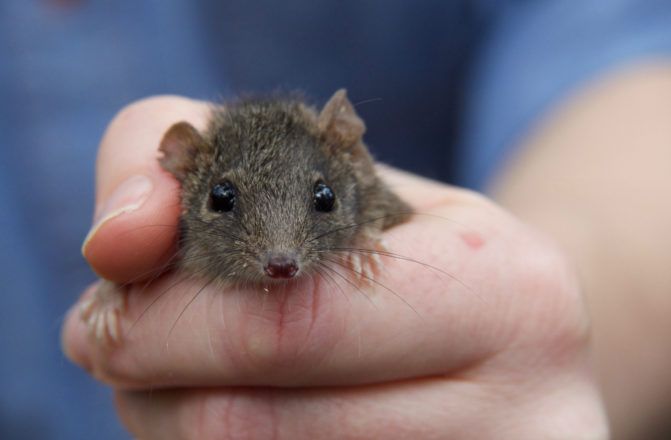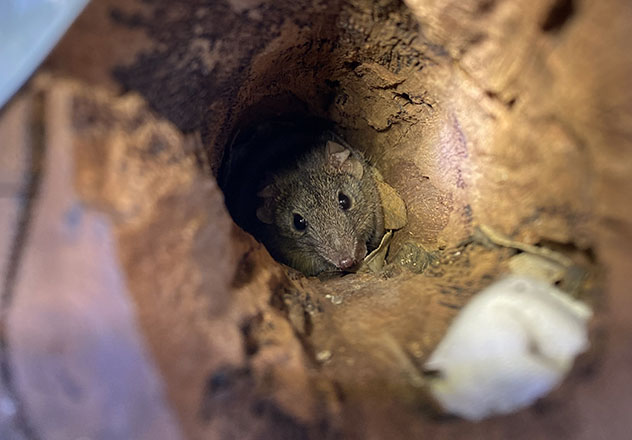The Brown Antechinus is a small carnivorous marsupial found in eastern Australia. Like most Antechinus, they face a fragile future due to introduced predators and habitat destruction. AWC successfully reintroduced the species to Sydney’s North Head where they were locally-extinct.


 J Clarke/AWC
J Clarke/AWC
In 2017, after several decades of being absent from North Head, AWC reintroduced 30 individuals with the goal of establishing a self-sustaining population.
In total, over 70 Brown Antechinus were reintroduced at North Head. Monitoring has revealed their presence at multiple locations, and videos have captured them feeding on Banksia inflorescences. This is a very positive sign given their naturally high annual mortality post-breeding (i.e., total male die-off, and significant annual female mortality) and their fragile future due to habitat loss, predation by cats and foxes, and changing fire patterns.
 A Wright/AWC
A Wright/AWC
The main threats to Brown Antechinus are habitat loss and degradation and predation by introduced animals such as cats and foxes and. Habitat destruction through deforestation and unregulated fires removes the complex understory ecosystem that Brown Antechinus require for food and shelter.
 H Nelson/AWC
H Nelson/AWC
Description
Brown Antechinus have a long, pointed head, four pairs of small sharp incisor teeth and short, dense, coarse fur. They are sexually dimorphic (sexes exhibit different characteristics), with males weighing twice as much as females at up to 71 grams.
Ecology
Brown Antechinus are semi-arboreal and nocturnal, emerging during the night to prey upon insects, spiders, centipedes and sometimes small reptiles and frogs. During the day they can be found in nests in tree hollows, crevices or in logs on the ground. They are considered important in the pollination of some Australian flowering plants, particularly the endangered ecological community of Eastern Suburbs Banksia Scrub.
During warm periods these marsupials live in solitary nests and occupy their own home ranges. As temperatures drop, both males and females stay together in nests with up to 18 animals. To cope with winter stress, Brown Antechinus may slip into a torpor for a few hours to lower their metabolic requirements.
They also employ torpor as a strategy to withstand the impacts of fire on their habitat, with torpor providing physiological and behavioural advantages to survive in a landscape immediately after fire, when food and water are scarce.
Brown Antechinus reach reproductive maturity in 9-10 months. The mating season happens in late winter and is restricted to a two-week period. Males die after their first breeding season as a result of stress and exhaustion.
During the season females’ mate with multiple males, resulting in sperm competition – where males with better genetic quality have better performing sperm – which means each litter will contain babies from multiple fathers. Antechinus have the biggest litter of any Australian marsupial, averaging eight to ten babies, which attach to a teat on the mother’s underside in an open pouch.
Range and Abundance
The Brown antechinus is found east of the Great Dividing Range in Australia, from south-eastern Queensland to around Kioloa, New South Wales. They prefer wet sclerophyll forest with dense ground cover and an abundance of fallen trees in which to build nests.
Please help us restore Australia's native wildlife
Donate NowAWC helps protect a population of Kangaroo Island Dunnarts on Kangaroo Island.
Koalas inhabit eucalypt forests and woodlands in eastern Australia from north Queensland through to south-east South Australia.